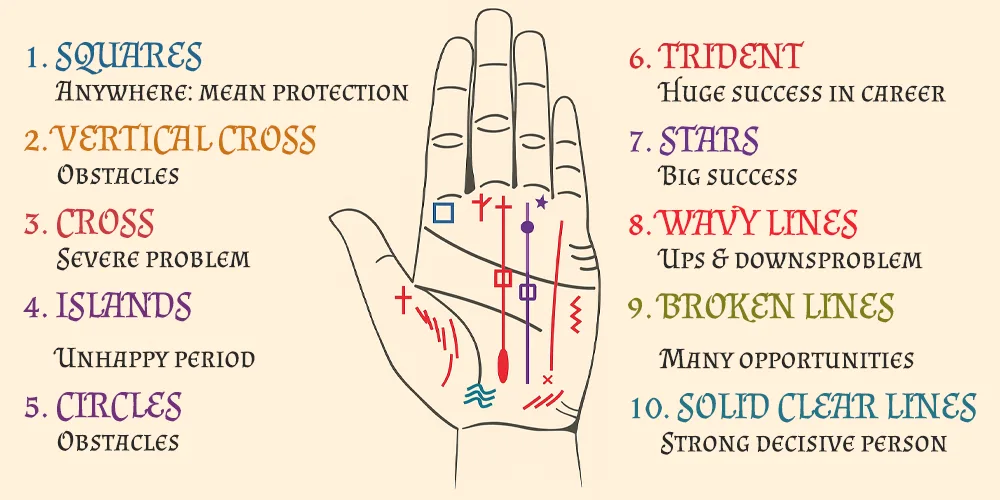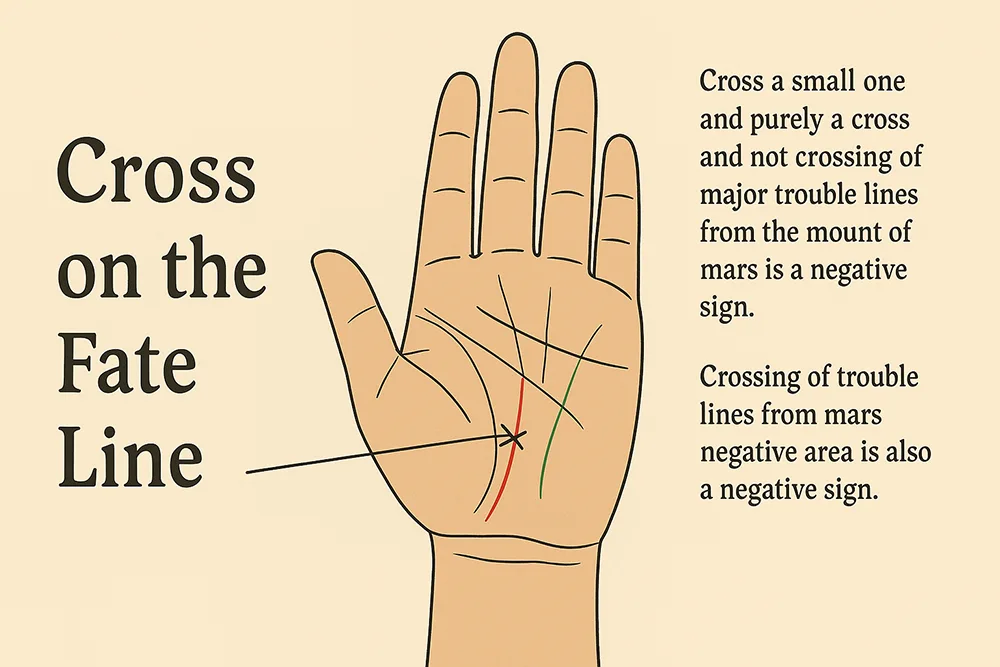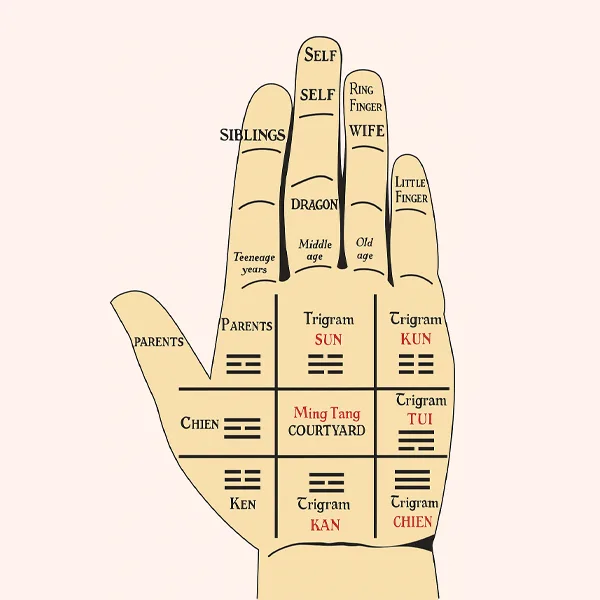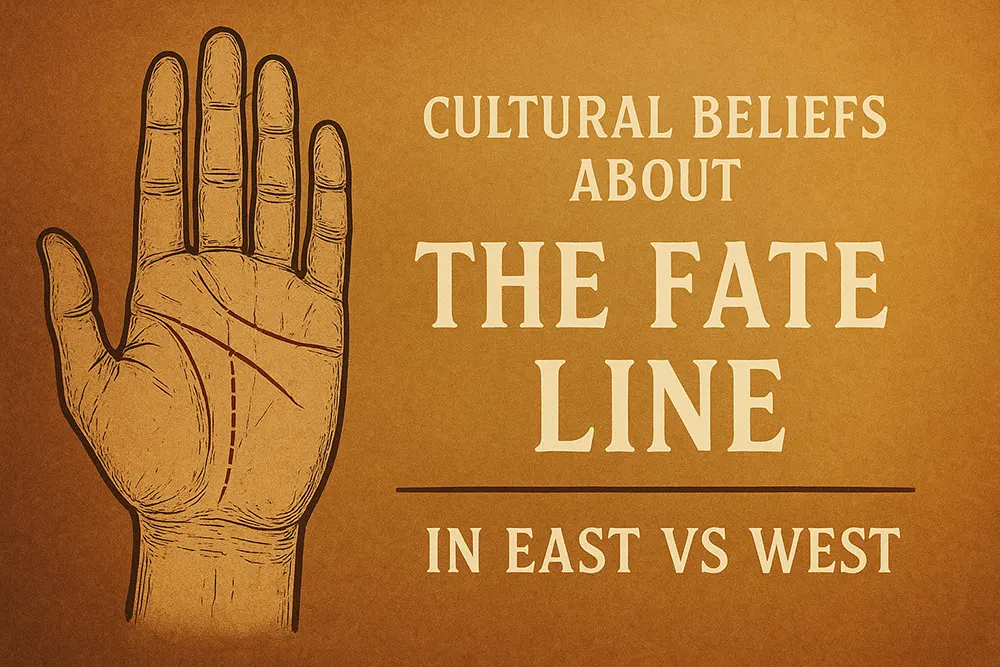Have you ever glanced at the lines etched into your palms and wondered what secrets they hold? Palmistry, the ancient art of reading hands, has captivated humanity for millennia, offering glimpses into personality, life paths, and even destiny. Among the major lines—the life line, heart line, head line, and others—the fate line stands out as a profound indicator of career, success, and life’s twists. But here’s where it gets fascinating: cultural beliefs about the fate line vary dramatically between Eastern and Western traditions. In the West, it’s often seen as a marker of personal ambition and external influences, while in the East, it ties into cosmic forces, karma, and elemental balances.
This exploration delves deep into these differences, drawing from historical roots, expert interpretations, and real-world examples. Whether you’re a skeptic curious about pseudoscience or a believer seeking self-insight, understanding the fate line through an East-West lens can reveal how diverse societies perceive destiny. We’ll cover its meanings, variations, and even remedies, all while addressing common questions that arise in palm reading discussions.
The Origins and Basics of Palmistry
Palmistry, also known as chiromancy or chirology, traces its origins back over 5,000 years. Ancient texts from India, China, and Egypt reference hand reading as a tool for divination and self-understanding. In India, it’s intertwined with Vedic astrology, where hands are viewed as maps of karma and planetary influences. Chinese palmistry aligns with Taoist principles, emphasizing the flow of qi (life energy) and the five elements: wood, fire, earth, metal, and water. In contrast, Western palmistry evolved from Greek and Roman traditions, later influenced by Romani gypsies, focusing more on psychological traits and life events.
At its core, palmistry analyzes the hand’s shape, mounts (fleshy areas), fingers, and lines. The four major lines are:
- Life Line: Curves around the thumb, indicating vitality and major life changes.
- Heart Line: Runs horizontally across the top, revealing emotional nature and relationships.
- Head Line: Below the heart line, showing intellect, communication, and decision-making.
- Fate Line: A vertical crease through the palm’s center, often called the line of destiny or career line.
The fate line isn’t present on every hand—about 40-50% of people lack it entirely, which in itself carries meaning. When it appears, it typically starts near the wrist or base of the palm and ascends toward the middle finger (associated with Saturn, the planet of discipline and karma). Its depth, length, breaks, and intersections with other lines provide clues about career stability, obstacles, and fortunes.
But why focus on the fate line? In a world obsessed with success and purpose, this line symbolizes how external forces—be it luck, society, or cosmic design—shape our journeys. Cultural lenses amplify these interpretations: Eastern views often see it as modifiable through remedies, while Western ones treat it as a reflective tool for personal growth.
Understanding the Fate Line: A Universal Yet Diverse Symbol
Before diving into cultural specifics, let’s establish what the fate line generally represents. Also known as the Saturn line, it reflects one’s career trajectory, ambitions, and the role of fate versus free will. A strong, unbroken line suggests a clear path to success, driven by determination and opportunities. Breaks or islands indicate setbacks, job changes, or periods of uncertainty.
Timing is key in readings: The line’s lower portion corresponds to early life (ages 0-35), the middle to midlife (35-55), and the upper to later years (55+). For instance, a fork at the end might signal branching careers or dual roles, while a chain-like appearance points to instability.
Historically, the fate line’s prominence grew in the Renaissance, when European scholars blended Eastern mysticism with Western humanism. Today, it’s a staple in both casual readings at fairs and professional consultations, with apps and online tools democratizing access.

The Fate Line in Western Palmistry: Destiny as a Personal Journey
In Western palmistry, popularized in Europe and North America, the fate line is viewed through a lens of individualism and psychology. It’s not just about predestined events but how one’s choices interact with external circumstances. Influenced by figures like Cheiro (William John Warner) in the 19th century, Western readings emphasize self-reflection over fatalism.
Key Beliefs and Interpretations
- Position and Strength: A deep, straight fate line starting from the base of the palm indicates a life guided by strong destiny, with early interests leading to a fulfilling career. If it joins the life line at the start, it suggests a self-made path from humble beginnings, often resulting in entrepreneurial success.
- Breaks and Changes: Multiple breaks imply career shifts or periods of reinvention. For example, a break followed by a stronger continuation might mean overcoming a midlife crisis to achieve greater heights. A faint or missing line doesn’t spell doom; it often means a flexible life with multiple passions, common among artists or freelancers.
- Intersections: If the fate line crosses the head line, it could signal a career decision influenced by intellect, like switching jobs for better opportunities. Touching the heart line might indicate emotional factors, such as family affecting professional choices.
Western believers often see the fate line as changeable—lines can deepen or fade with life experiences, reflecting personal growth rather than immutable fate. For instance, in modern interpretations, a curved fate line suggests adaptability in a fast-paced world, ideal for tech or creative fields.
Historical and Cultural Context
Western palmistry gained traction in the Victorian era, blending with tarot and astrology for entertainment. Today, it’s recreational: About 20% of Americans have tried it, often at parties or through books like “The Palmistry Bible.” Unlike Eastern traditions, there’s no emphasis on remedies; instead, it’s about empowerment. A weak fate line might prompt someone to “take control” through career coaching, aligning with Western values of self-determination.
Consider a real-world example: A Silicon Valley entrepreneur with a broken fate line might interpret it as validation for pivoting from one startup to another, viewing breaks as opportunities rather than curses.
The Fate Line in Eastern Palmistry: Cosmic Forces and Karma
Eastern palmistry, particularly in India and China, treats the fate line as a bridge between human effort and divine will. Rooted in ancient philosophies, it’s more predictive and holistic, often integrated with astrology or feng shui.
Indian Palmistry (Hasta Samudrika Shastra)
In India, the fate line (Bhagya Rekha) is linked to Saturn and karma, revealing career stability, fortune, and life obstacles. It’s seen as a record of past lives’ deeds influencing the present.

- Types and Meanings: A deep, clear line promises steady growth and financial success through discipline. Broken lines indicate instability, like job losses or family disruptions. Starting from the life line signals self-earned wealth; from the head line, success after 35.
- Variations: Islands suggest blocks, like financial losses from poor decisions. Forks imply multiple careers or power roles. Absence means independence, suiting creative souls.
- Remedies: Unique to India, weak lines are “fixed” with gemstones like blue sapphire for stability or emerald for emotional balance, worn with mantras. This reflects a belief in altering destiny through positive actions.
Indian culture integrates palmistry deeply—60% trust it for decisions like marriages, with a booming market for remedies. A Delhi palmist might use the fate line to predict a career shift, combining it with horoscopes.
Chinese Palmistry
Chinese readings emphasize qi balance and the five elements, with the fate line as the career line indicating luck and work changes.

- Meanings: A long, deep line means strong career ability and success through striving. Shallow lines suggest hard work with twists; oblique ones indicate innovative thinking.
- Starting and Ending Points: From the life line: vitality leads to success. Ending at Mount of Saturn: built-from-nothing achievement. Breaks signal setbacks, like property loss.
- Cultural Ties: Tied to Taoism, it’s about harmony. Remedies involve lifestyle changes, like diet for qi flow. Double lines mean dual careers.
In China, palmistry is practical, with 10% consulting for Lunar New Year insights.
Key Cultural Differences: East vs West
The East-West divide in fate line beliefs mirrors broader philosophies: collectivism vs individualism, fatalism vs agency.
- Predictive vs Reflective: East predicts “when” (e.g., career shift at 35); West asks “who am I?”
- Remedies and Change: East offers gems or adjustments; West sees lines as unchangeable mirrors.
- Cosmic Integration: East links to planets/elements; West focuses on psychology.
- Belief Depth: East is mainstream (e.g., Indian weddings); West is casual.
These differences highlight how cultures navigate uncertainty—East through harmony and fixes, West through self-empowerment.
Common Interpretations, Variations, and Modern Applications
Variations like tridents (fame in East) or curves (adaptability in West) add layers. In travel lines intersecting fate, East sees life-changing journeys; West, career moves.
Modernly, palmistry blends cultures: Apps use AI for readings, therapists incorporate it for insight. A global executive might consult both traditions for balanced views.
Examples abound: A broken fate line in an Indian reading prompted gemstone use for career boost; in West, it inspired a pivot to passion projects.
Frequently Asked Questions (FAQs) About the Fate Line
Here are answers to common queries, based on expert insights:
- Does everyone have a fate line? No, about half don’t. In East, it means self-created success; in West, flexible paths.
- What if my fate line is broken? Indicates changes or obstacles. East: career instability; West: reinvention opportunities.
- Can the fate line change? Yes, with life experiences. East believes remedies help; West sees it as reflective.
- What does a double fate line mean? Dual careers or skills. Common in Chinese views for balanced obligations.
- How does the fate line relate to career success? Strong lines suggest stability; weak ones, effort needed. East ties to luck; West to ambition.
- What if the fate line joins the life line? Self-made success through hard work, per both traditions.
- Are there remedies for a weak fate line? In East, yes—gemstones like blue sapphire. West: No, focus on actions.
- How accurate is fate line reading? It’s interpretive, not scientific. Cultural beliefs add value for guidance.
- Does the fate line predict wealth? Partially; strong lines indicate financial achievement via career.
- What’s the difference in East vs West interpretations? East: Cosmic, predictive; West: Personal, reflective.
Conclusion: Embracing the Lines of Destiny
The fate line, viewed through Eastern and Western lenses, reminds us that destiny is both given and shaped. In the East, it’s a call to align with cosmic forces; in the West, a prompt for self-directed paths. Regardless of belief, exploring these cultural nuances enriches our understanding of human experience. Next time you look at your palm, consider: Is your fate line a map or a mirror? Perhaps it’s both, inviting you to navigate life’s journey with wisdom from around the world.
